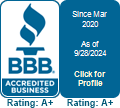
Understanding IRAs: Key Terms Explained
You do possess an IRA, don’t you? If you don’t, you’ll lose out on one of the best financial moves you have ever made. Many financial gurus will advise you to open an IRA as your first move towards a respectable retirement in addition to popular employer plans like 401(k) s.
Individual Retirement Arrangements (IRAs) provide tax advantages and various investment options that encourage individuals to acquire assets that would help them secure a stable income in retirement. Understanding key IRA terms is essential whether you’re planning for retirement or looking to optimize your investment strategy. Here are the basic terminology one should know to make informed financial decisions.
1. Traditional IRA
A Traditional IRA is a retirement account where you can deposit pre-tax money. The contributions grow tax-deferred until withdrawal.
However, contributions to a Traditional IRA are subject to annual limits set by the IRS. Taxes will apply upon withdrawal, ideally during retirement when your tax bracket may be lower. However, early withdrawals made before 59½ are subject to penalties.
2. Roth IRA
A Roth IRA is kind of retirement plan where you can contribute after-tax money. Taxes are not applied to qualified retirement withdrawals, including earnings. A Roth IRA has income eligibility restrictions, unlike a Traditional IRA. Additionally, the five-year rule, which applies only to Roth IRAs, stipulates that contributions must remain in the account for five years before you can withdraw any gains to avoid incurring taxes or penalties. Further, to withdraw earnings free of taxes and penalties, you must be at least 59 1/2.
3. IRA Rollover
An IRA rollover involves moving funds from one retirement account to another, typically from a 401(k) or another IRA into a Traditional or Roth IRA. For example, you can take money from your 401(k) and put it into an IRA if you quit your job. It seems as though you are simultaneously making a contribution and a distribution. As long as the conditions are adhered to, rollovers are tax-free.
Rollovers can be either direct, where the funds are transferred directly between custodians, or indirect, where you receive the funds and have 60 days to deposit them into another IRA to avoid taxes and penalties.
4. Contribution Limits
Contribution limits refer to the maximum amount of money you can contribute to your IRA in a given tax year. These are established by the IRS and vary depending on the type of IRA and your age. For instance, in 2024, the annual contribution limit for Traditional and Roth IRAs is $7,000 for individuals under 50 and $8,000 for those 50 and older.
5. Required Minimum Distribution (RMD)
Once you reach a certain age, typically 72 as of 2024 (though it was 70½ before), the IRS requires you to start taking withdrawals from your Traditional IRA annually. These mandatory withdrawals, also known as Required Minimum Distributions (RMDs), are calculated based on age and the account balance. Failing to make these withdrawals can result in significant tax penalties.
6. Disbursements or Withdrawals
These phrases are often used interchangeably. Both are about taking funds (or earnings) from your account. Taking money out of your IRA when you retire is known as a distribution or withdrawal. Remember that you will typically be fined a 10% penalty fee if you withdraw any money from your IRA before reaching the age of 59½.
7. Adjusted Gross Income or AGI
The Federal Income Tax is calculated based on your AGI. It considers all your taxable income from the previous year, including salary, interest, capital gains, and dividends, minus certain deductions, such as IRA contributions, student loan interest, alimony, and business expenditures. It is crucial in determining your taxable income and eligibility for various tax deductions and credits. For example, eligibility for deductible IRA contributions depends on AGI for individuals covered by employer-sponsored retirement plans.
8. Early Withdrawal Penalty:
Withdrawing funds from an IRA before the age of 59½ incurs a penalty of 10% on the amount withdrawn and any applicable income taxes. The purpose of this penalty is to deter early withdrawals and promote retirement savings. However, there are certain exceptions to the early withdrawal penalty, such as using the funds for qualified education expenses or first-time home purchases.
9. MAGI or Modified Adjusted Gross Income:
Your Adjusted Gross Income (AGI) plus a few items, such as exempt or excluded income and certain deductions, equals your Modified Adjusted Gross Income (MAGI). When calculating your eligibility for various tax benefits, including deductions, credits, and contributions to retirement accounts like IRAs, the IRS utilizes your MAGI. Depending on the tax benefit, MAGI may change.
10. Tax Deductibility
Tax deductibility refers to whether your contributions to a Traditional IRA are eligible for a deduction on your income taxes. Deducting your contributions depends on factors such as, your income, filing status, and whether you or your spouse are covered by a retirement plan at work. Understanding the rules around tax deductibility can help you maximize the tax benefits of your IRA contributions.
11. Spousal IRA:
A Spousal IRA allows a spouse with little or no earned income to contribute to an IRA based on the income of their spouse who does have earned income. It is an exemption to the rule which states that one needs to be employed to make an IRA contribution. The working spouse’s income must, however, match or above the combined IRA contributions made by the two spouses.
To be eligible to contribute, the couple must file a combined tax return. The contribution caps, income restrictions, and catch-up contribution rules that apply to regular and Roth IRAs also apply to spouse IRAs, which can be either type of account. Spouses can split account withdrawals in retirement, even if IRAs are not maintained jointly in both names.
12. SIMPLE IRA
Employers and workers can contribute to traditional IRAs established for employees through a SIMPLE IRA Plan (Savings Incentive Match Plan for workers). It is perfect for small firms who do not already sponsor a retirement plan as a start-up retirement savings plan.
BOTTOM LINE
By familiarizing yourself with these key IRA terms, you will be better equipped to make informed decisions and maximize the benefits of your retirement account. Whether you’re opening a new IRA, managing existing accounts, or planning for retirement, take the time to educate yourself further and consider consulting a financial advisor to tailor your IRA strategy to your unique financial goals and circumstances.


